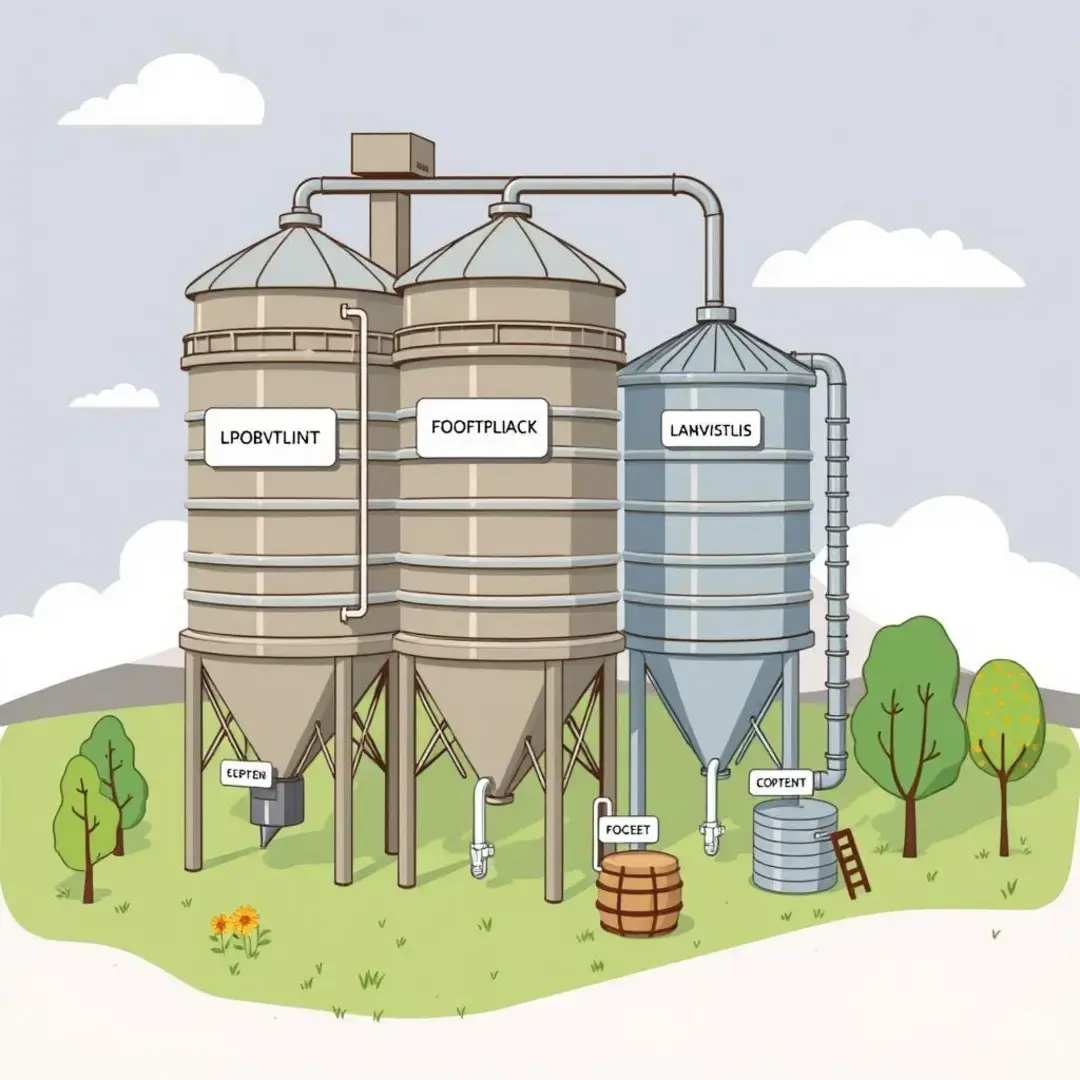Content Silos: Definition, Types, Impact & Best Practises
What are content silos?

Defining content silos
Content silos are a structured approach to organizing your online content in a way that enhances its clarity and relevance. In essence, a content silo arranges your website’s material into distinct categories that group related topics together. This model not only improves user experience but also aids search engines in understanding the thematic relations between different pieces of content. By creating silo structures, websites can reinforce their messages and focus areas, leading to a more coherent content marketing strategy.
A successful silo structure typically consists of a main topic accompanied by several subtopics that delve into specific facets of the main subject. This hierarchy mimics a traditional tree-like formation where the root represents the core area of focus, and the branches signify the various subtopics. This systematic categorization helps in crafting a narrative that resonates with users and drives them deeper into the content journey.
Effective content silos share several key characteristics: they should be logically organized, easily navigable, and richly linked together. When constructing a content silo, it’s crucial to establish clear paths that guide users from broad topics to specific information seamlessly. Additionally, a highly interconnected structure not only aids users in exploring related content but also encourages search engines to crawl the site efficiently, strengthening the overall SEO strategy.
Types of content silos
One of the most common forms of content silos is the topic-based silo, where content is categorized by subject matter. Each silo represents a distinct theme related to your core business offering, making it easy for readers to find content of interest. For instance, a digital marketing blog might have silos for topics like SEO, PPC, and social media, with each section housing articles dedicated to those themes.
Format-based silos group content according to its type rather than its subject matter. This can include categories like blog posts, videos, infographics, or case studies. Such a structure is beneficial for businesses that offer diverse types of content aimed at different user preferences, as it allows users to navigate easily to their preferred content format without sifting through unrelated topics.
Audience-based silos focus on creating tailored content for distinct user personas or demographic groups. This approach ensures that specific audience needs are met, enhancing user engagement and conversion rates. Marketers can create targeted guidance or resources that speak directly to each group’s preferences, whether they’re new customers, existing clients, or industry professionals.
Impact of content silos on SEO and UX

SEO benefits of using content silos
Implementing content silos significantly enhances your website’s architecture, making it easier for search engines to understand the relationship between various content pieces. A well-structured site layout allows crawlers to index content more efficiently, improving overall visibility in search results. This is crucial for optimizing your website’s performance in search engines, as it directly affects your site’s authority and reach.
With clearly defined silos, you can better optimize your content for target keywords. Each silo can focus on specific keywords related to the overarching topic, boosting its relevance in search engines. This focused approach results in higher search rankings, as search engines favor websites that present clear thematic structures and relevant content.
By consistently delivering high-quality content within each topic silo, you cultivate topical authority. This authority signals to search engines that you are a credible source of information, increasing your chances of ranking higher for competitive keywords. Overtime, this builds trust with both users and search engines, ultimately driving more organic traffic to your website.
UX benefits of using content silos
Content silos significantly improve user navigation by presenting related information in an organized manner. Users can easily explore topics of interest without feeling overwhelmed by unrelated content. This not only enhances user satisfaction but encourages them to delve deeper, increasing the time spent on your site.
By tailoring the user experience through silos, visitors find content that is more relevant to their needs. This heightened relevance translates into higher engagement rates as visitors are more likely to interact with and consume the content that resonates with them. In turn, this can lead to higher conversion rates as the likelihood of users taking meaningful actions increases.
A well-defined content silo structure creates a cohesive user experience that fosters loyalty and repeat visits. When users can effortlessly navigate your site and find content that matters to them, they’re more likely to trust your brand and return for further insights. This trust establishes you as an authority in your niche, creating a solid foundation for ongoing user relationships.
Best practices for implementing content silos

Planning your content silo structure
The first step in establishing effective content silos is identifying your core topics. Consider what areas your business excels in and what your audience is interested in. Breaking these down into subtopics will allow you to create comprehensive, navigable silos that effectively guide users through your content landscape.
Once you have your topics and subtopics in mind, mapping out the content hierarchy visually can be beneficial. This could involve creating a flowchart that outlines how various pieces of content connect under each silo. Such a visual representation not only aids in planning but also helps in refining the user journey across your content.
Every website is unique, so selecting the right approach to structuring your silos is critical. Decide whether a topic-based, format-based, or audience-based structure aligns best with your business goals. Test different approaches and analyze user engagement metrics to determine which structure delivers the best results over time.
Creating and optimizing siloed content
Content quality is vital, especially within silos, where in-depth articles can establish authority and enhance user experience. Each piece of content should address the specific needs of your audience while providing valuable insights and actionable takeaways. The more comprehensive and engaging your content, the better equipped you’ll be to attract and retain an audience.
Each piece of content in a silo should be meticulously optimized for target keywords relevant to that topic. This includes using the primary keyword strategically in titles, headings, and throughout the body text. Implementing SEO techniques such as meta descriptions, alt tags for images, and URL optimization will further solidify your content’s visibility in search engines.
Strategically using internal links within and between your silos can significantly boost SEO and user experience. Internal links create a network of connections that help users discover related content while signaling to search engines the importance of various pages. This not only enhances usability but also contributes to building domain authority.
Maintaining and updating your content silos
Maintaining your silos requires regular audits to ensure content remains relevant and accurate. Over time, information can become outdated, making it essential to revisit and refresh articles as necessary. Regular updates to your content also demonstrate to both users and search engines that your website is active and authoritative.
Consistent monitoring of keyword performance is essential for gauging the success of your silo strategy. Utilizing analytics tools to track keyword rankings can provide insights into what’s working and what needs adjustment. By staying attuned to performance metrics, you can optimize content continually to maximize its impact.
As your business evolves, so too might your content needs. Be prepared to adapt your silo structure in response to changes in audience interests, industry developments, or shifts in your business focus. Flexibility in your strategy will not only help you stay relevant but will also ensure that your content remains aligned with business objectives and provides value to your audience.













